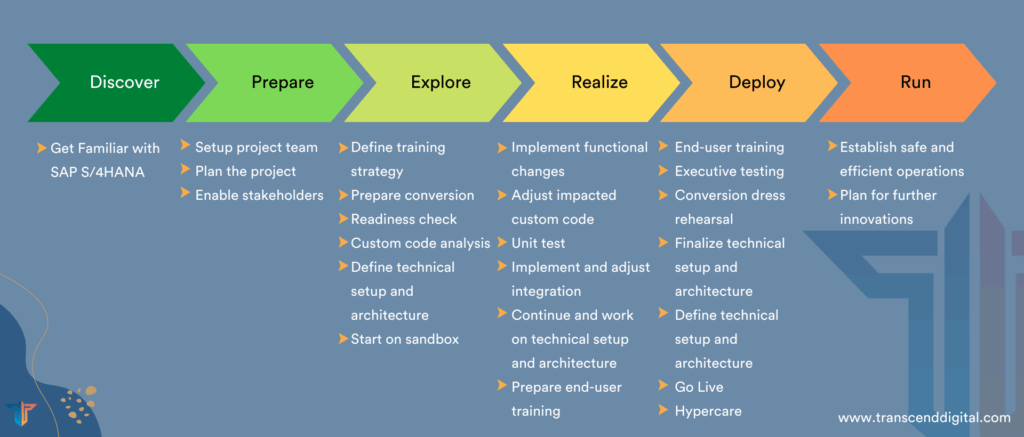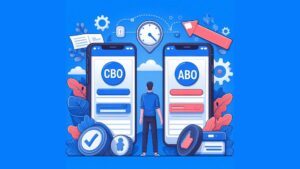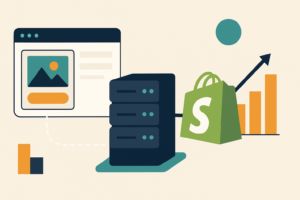What is SAP?
Systems Applications and Products in Data Processing is the abbreviation for SAP. By definition, SAP is both the brand name of the business and the name of the ERP (Enterprise Resource Planning) programme. European multinational SAP Software was established in 1972 by Wellenreuther, Hopp, Hector, Plattner, and Tschira. For managing business operations and customer connections, they create software solutions.
Types of SAP
The two types of SAP systems that stand out the most are ECC and S/4HANA. The type of database each uses is the primary distinction between the two.
ERP Central Component is referred to as ECC. It is a legacy system owned by SAP, whose origins date back to the 1970s and their very first ERP solution. Any database, including third-party and, more recently, HANA, can be used with it. Customers are anticipated to migrate their systems to S/4HANA as new versions of ECC are not being launched.
SAP Business Suite 4 HANA is abbreviated as S/4HANA. It is the most recent product from SAP and is the fourth version of the SAP Business Suite. It only utilizes SAP’s in-memory HANA database, which was designed from the ground up for quick speed and real-time reporting.
In order to benefit from the performance and data analytics capabilities of SAP HANA, SAP completely revamped SAP ECC to create SAP S/4HANA in 2015.
SAP ECC to SAP S/4HANA Conversion Process
We must first debate and make a decision regarding data cleansing before we can start a conversion process. This covers both master data and transactional data cleansing (cleansing historical data) in accordance with the clients’ legal obligations. The technical team finds that data cleansing is helpful in lowering the amount of the database that needs to be converted, allowing for an efficient conversion.

The Readiness Check Report is the starting point document for the conversion as we go into the Prepare phase: Execute transaction SE38’s /SDF/RC START CHECK command.
A high-level study called “Readiness Check” provides information on Active Business Functions, Add-On Compatibility, Custom Code Analysis, Recommended Fiori Apps, SAP S/4HANA Sizing, Simplification Items, Business Process Analytics, and Data Volume Management.
From a functional perspective, Active Business Functions, Add-On Compatibility, and Simplification Items are the primary components that need to be examined.
“ We can employ particular new features and advancements for our various business processes thanks to the active business functions. “
Business functions in SAP S/4HANA can have the following statuses: ‘always on’, ‘customer switchable’, and ‘always off’. As a result, during the system conversion, the following behavior occurs:
- A system conversion is not currently achievable with this release at this time if a business function was turned on in the start release system but defined as “always off” in SAP S/4HANA, on-premise edition.
- A business function will be automatically activated during the conversion if it was deactivated in the start release system but defined as “always on” in the target release.
The Conversion works in three phases at a high level:
1. Pre-conversion and In-depth Evaluations
The simplification items’ resolution is a pre-conversion activity. The majority of the actions on the logistics side take place prior to conversion, but we are heavily involved in the post-conversion process for finance. When the system is converted, we conduct Detailed Assessment Sessions with the clients to inform them of any potential changes that may have an influence on the business process, either directly or indirectly.
2. Software Upgrade Manager (SUM)
After the Basis team has finished identifying and addressing the Simplification Items, it launches the SUM (Software Upgrade Manager) tool. This multifunctional tool supports a number of processes, including performing release upgrades, installing enhancement packages, using support package stacks, installing add-ons, and updating individual components on SAP NetWeaver.
3. Post-Conversion
The post-conversion actions take center stage after the Software Update Manager Conversion. These consist of any human data migration, alterations to the code, and Workflows, Reports, Interface, Conversion, Enhancements, and Forms (WRICEF) implementations needed to meet client and system landscape needs.
In addition to the above, the consultants must also create a configuration document or run book that can be used as a reference to comprehend the significant configuration changes that have been made as part of the conversion.
We move on to the testing after the Post-Conversion Activities are complete. This method can be used in many types of landscapes (Sandbox, Development and Quality). We do a smoke test in Sandbox to validate the foundational operations and features. Similar to this, we run a round of unit tests in development. System Integration Testing (SIT) and User Acceptance Testing (UAT) are carried out from the customer’s end after the Quality system has been transformed (with the support of SAP).
Cutover Strategy
We begin the cutover planning once System Integration Testing (SIT) and User Acceptance Testing (UAT) have been approved. This comprises a schedule for carrying out all necessary tasks in the dry run and the production system in order to complete the SAP ECC to SAP S/4HANA conversion. The cutover plan outlines the points of contact for the responsible Lines of Business as well as how their efforts will be timed and scheduled to ensure a successful and seamless conversion.
To summarize, a successful SAP S/4HANA conversion is possible if the above mentioned essential areas are examined and thoroughly investigated.
Bottomline
If you follow the steps outlined above, you should be one step closer to completing a successful migration. However, if you want to stand out in a crowded, competitive marketplace, please contact us. Allow us to do the heavy work so you can focus on what you do best.



